Best mini pedals for guitarists 2025: our pick of space-saving effects for your pedalboard
Honey, I Shrunk The Rig! Get compact with our pick of the best mini guitar pedals
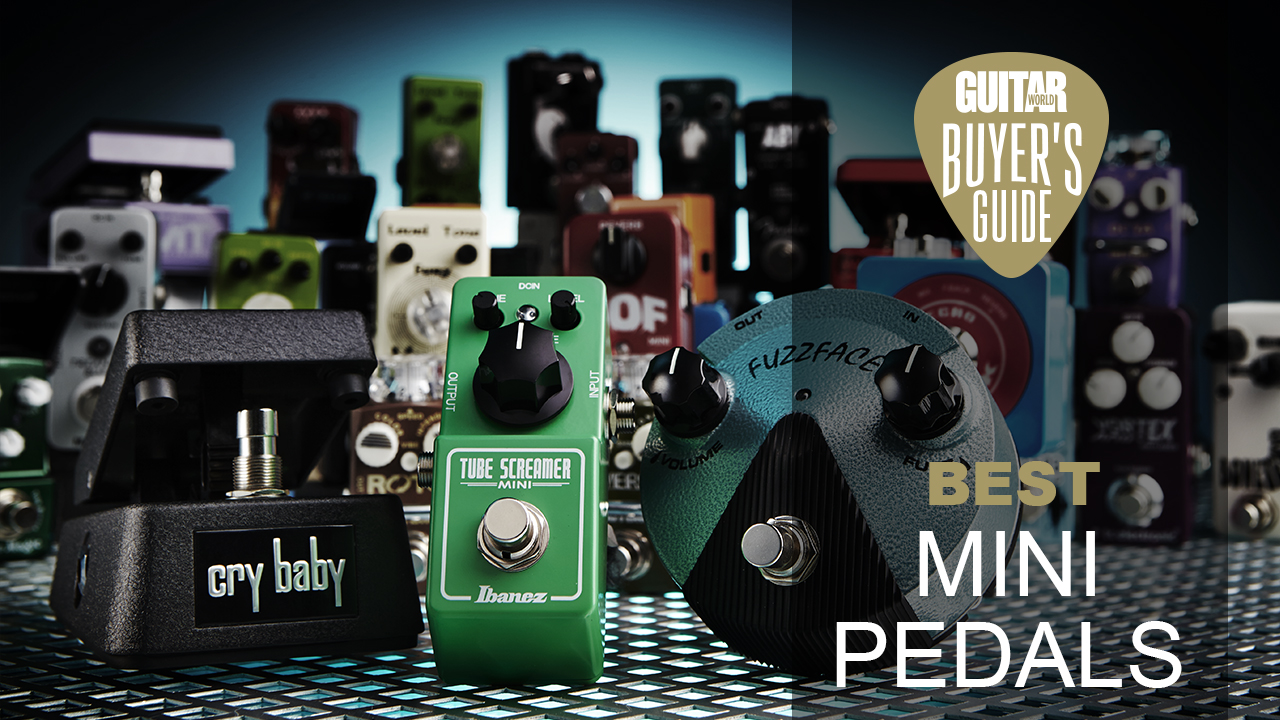
If you’re a gigging musician, and space is at a premium, or you just like to keep things neat and compact, then you’ll no doubt have considered lining up some of the best mini pedals on your board already. Once upon a time, altering your tone with stompboxes was a costly and bulky luxury, but now we have a plethora of compact and affordable choices to suit literally any style of guitarist.
The shift within the last decade or so towards making guitar rigs smaller is only enforced by the rise in popularity of mini pedals and compact boards. The best mini pedals for guitarists often take the idea of a tried and tested classic, and essentially just shrink it. This means that you can either carry a smaller setup around, or you can fit more pedals onto your board. Either way, it’s a win!
From overdrives and distortions, to reverbs and modulations and beyond, the best mini pedals for guitarists cater for any and all styles of player, regardless of where they might be in their career. Mini pedals used to be associated with strictly budget brands, however, many if not most of the major players have gotten involved to bring you some amazing sounds, in much more compact units.
There are loads out there, which is why we’ve put together this list of the best options out there.
Best mini pedals: Our top picks
With some great choices by many great companies, it’s hard to pick the best mini pedal for guitarists. For its popularity with such a wide range of players, we love the Tube Screamer Mini. It does exactly what a TS808 should do, but in a much smaller package – it’s perfect for using in front of a slightly driven amp, or using alongside other drive pedals. If you want to get most of your gain just from a pedal, then look at the MXR Duke Of Tone.
For players seeking a high quality reverb that’s easy to use but also allows for expression, then the TC Electronic Hall Of Fame Mini 2 is hard to beat. With its TonePrint software and MASH footswitch, there’s loads going on should you want to get more out of it, though it works great just as a simple reverb.
Best mini pedals: Product guide

1. Ibanez Tube Screamer Mini
Our expert review:
Specifications
Reasons to buy
Reasons to avoid
Ibanez’s TS Mini is a downsized version of its iconic Tube Screamer, which since its debut in 1979 has been one of the most recognizable, respected and employed overdrive pedals on the market.
True to its name, the Mini measures roughly 1 1/2–inches wide and 3 1/2–inches long. Ibanez pulled out all the stops to create this solidly built, all-analog stompbox in a compact design, while retaining the sonic integrity of its acclaimed TS808 Reissue. To accommodate its diminutive size, it features an internal surface mount JRC4558M chip, which is similar to the beloved JRC4558D chip found in the full-sized TS808 pedal. The TS Mini requires an external nine-volt adapter for power, and also features true-bypass switching and controls for Level, Tone and Overdrive.
Performance-wise, the TS Mini sounds so superb you’d be hard pressed to tell the difference between it and its full-sized counterpart in a blindfold test. It works best in front of a tube amp, makes single notes sound fatter and softens your low-end register with warmth and clarity, all while preserving the tonal nature of your amp. Pushing the Overdrive past 12 o’clock adds wicked squeal to pinch harmonics and lets you coax out some righteous musical feedback. All the warmth and punch of Ibanez’s classic TS808 overdrive in a pedal board–friendly size.
Watch our full Ibanez Tube Screamer Mini review
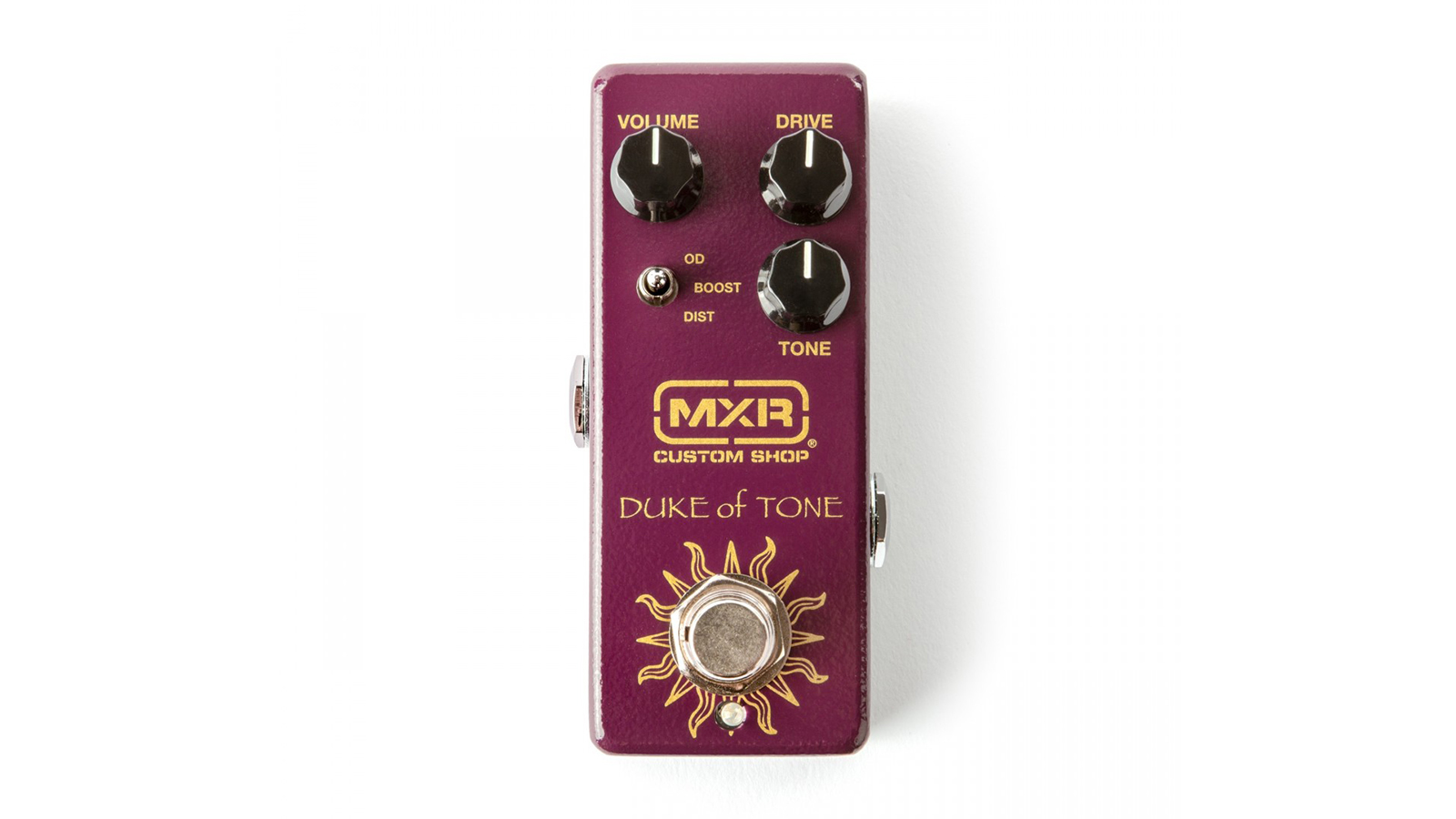
Specifications
Reasons to buy
Reasons to avoid
The Analog Man King Of Tone is one of the most revered overdrive pedals of all time. They go for a lot of money, and it can take years of waiting to get your hands on one. The single channel version, the Prince Of Tone is just as highly regarded and features on many a pro player’s board. The MXR Duke Of Tone has been designed with the Analog Man himself, Mike Piera, to bring you a much more compact and affordable version of the PoT.
It’s a transparent overdrive, so you will hear all the nuances of your guitar and amp shine through. There are three modes – Boost, Overdrive and Distortion, with each one giving you a little more gain and compression as you step it up. This makes it a really versatile pedal and, no matter how you’re using it, you can expect incredible tones – warm, with just the right amount of bite and attitude.
Should you want more headroom out of it, you can run it at 18v, plus it plays well with other gain pedals which can lead to some really interesting results.
Read our full MXR Duke Of Tone review
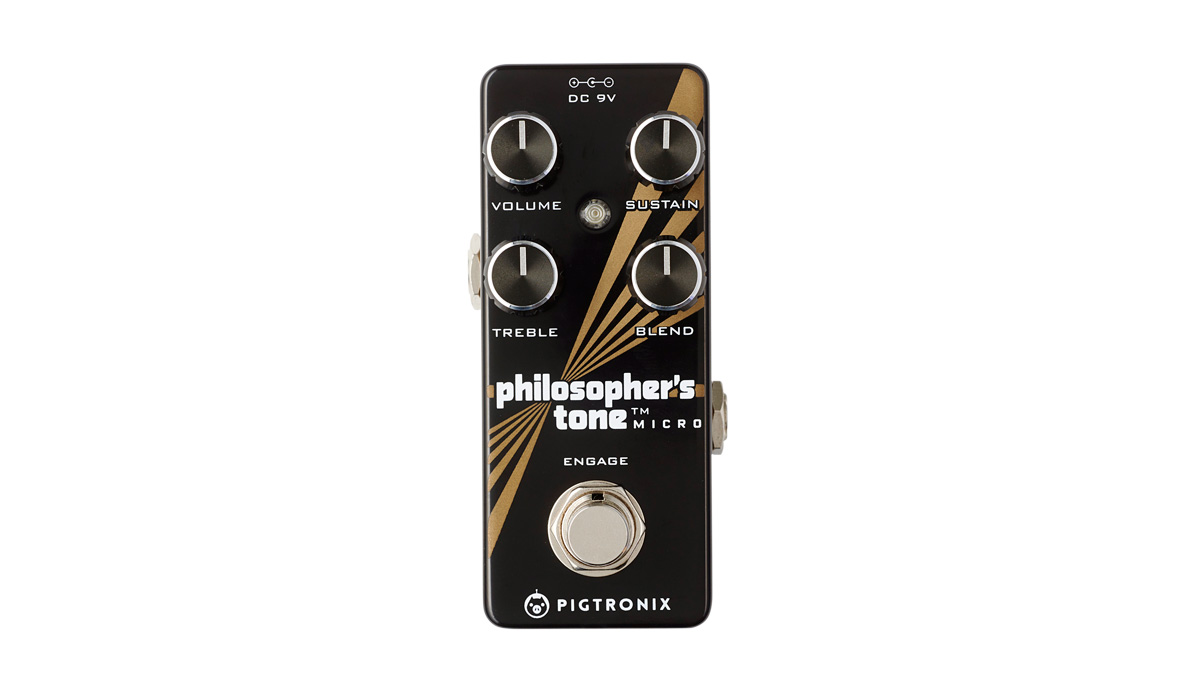
3. Pigtronix Philosopher's Tone Micro
Our expert review:
Specifications
Reasons to buy
Reasons to avoid
Pigtronix’s Philosopher's Tone Micro delivers all of the noiseless clean sustain and parallel optical compression of its larger namesake, but in a micro-sized chassis. The mini-pedal boasts volume and sustain controls, as well as a parallel Blend knob that allows users to mix their instrument's original dry tone with the compressed sound effect to their liking. Additionally, a treble control provides up to 6db cut or boost at 2KHz for fine-tuning the frequency response of the effect.
The Philosopher's Tone Micro features true-bypass switching and 9V operation, with internal 18V power rails for maximum clean headroom, even when used with hot pickups and line-level signals. With that combination of boost, compression and extra top-end, the pedal has a role to play beyond just a compressor, notably as a tone conditioner/driver that can elevate your sound for solos.
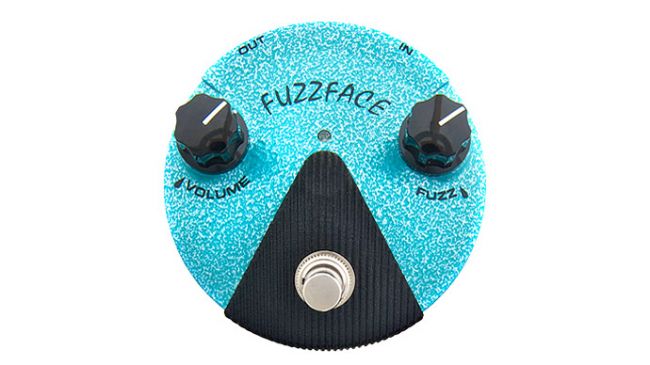
4. Dunlop FFM3 Jimi Hendrix Fuzz Face Mini Distortion
Our expert review:
Specifications
Reasons to buy
Reasons to avoid
Dunlop’s Fuzz Face Mini Jimi Hendrix offers a circuit identical to that of Dunlop’s JHF1 Jimi Hendrix Fuzz Face, based on Hendrix’s own Dallas-Arbiter Fuzz Face from 1969-’70 and featuring BC108 silicon transistors. The result is the same smooth and even sustain, harmonic overtones and compressed attack of the original, but in a smaller housing – and with a smaller price tag.
The Mini Jimi boasts volume and fuzz controls, true-bypass switching, a laser-bright status LED, AC power jack and easy-access battery door, all of which are presented in the same classic round chassis with the same skip-pad “nose” of the original, albeit at less than one-third the overall size.
Best of all, the new pedal expertly reproduces the classic Fuzz Face square-wave distortion – undeniably over-the-top, but still incredibly warm and smooth. The distortion cleans up nicely when the guitar’s volume control is backed down just slightly, allowing players to easily dial in the desired fuzz effect, from just a touch of hair to full-on fuzz assault at will. So you get all the fuzz, while saving pedalboard space and dollars.
Read our full Dunlop FFM3 Jimi Hendrix Fuzz Face Mini Distortion review
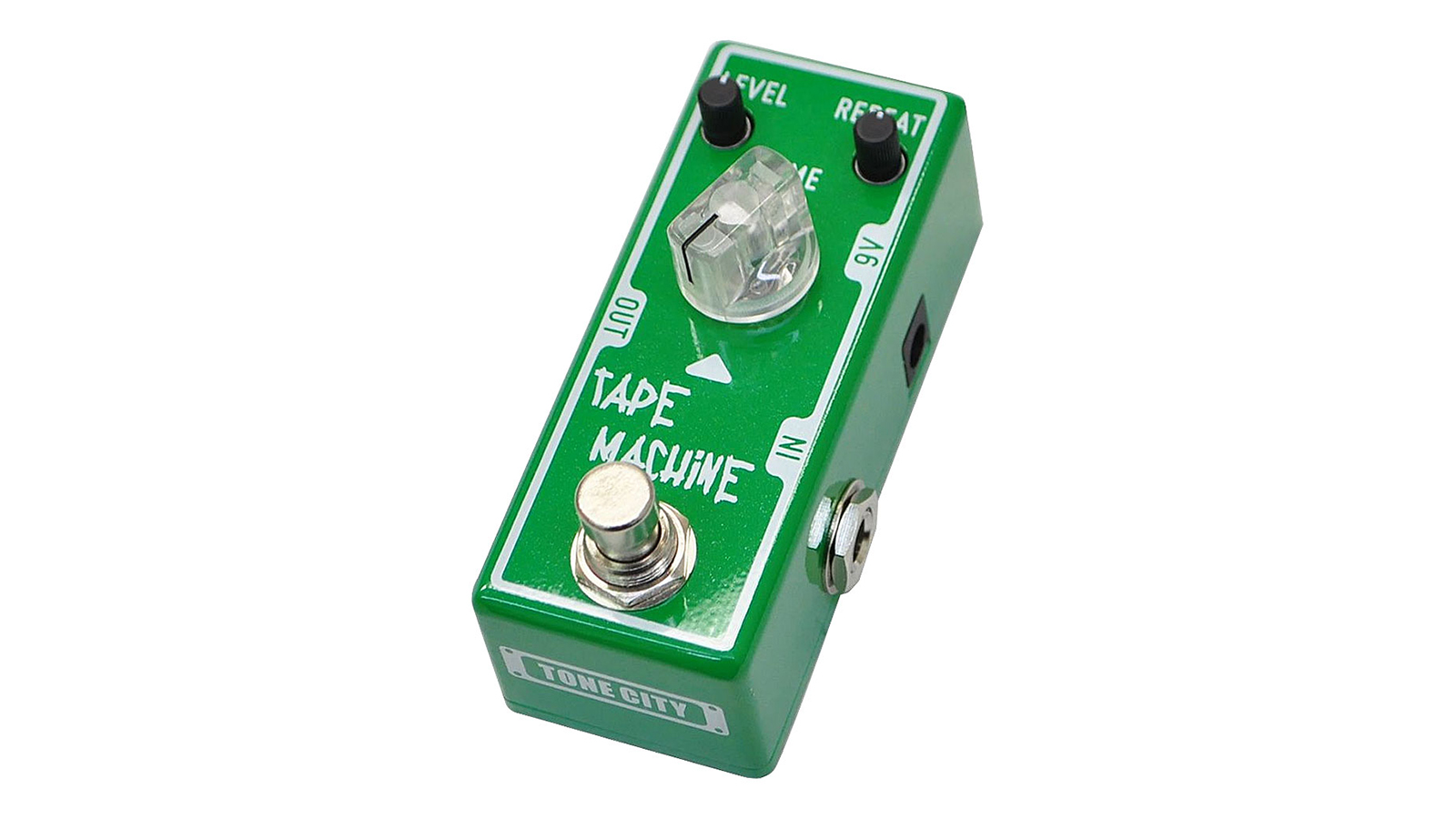
5. Tone City Tape Machine Delay
Our expert review:
Specifications
Reasons to buy
Reasons to avoid
If you’re after a straight-up, old school delay pedal that doesn’t take up much space on board and is easy on the wallet, then this might be the best choice you can make.
This nifty little analog delay ticks all of the above boxes, making it one of the best mini pedals for guitarists currently on offer. With up to 600ms of delay, you’ve got plenty to get your teeth into. Go from punchy slapback echos to more Floyd-esque delays with the main knob in the middle. The level and repeats knobs allow you to dial in the volume of the delay and how many times you hear it.
It being an analog delay pedal means that you get a lot of vintage style warmth to the repeats – they’re not digital or sterile sounding. Here you get a ton of character, without spending a ton of cash.
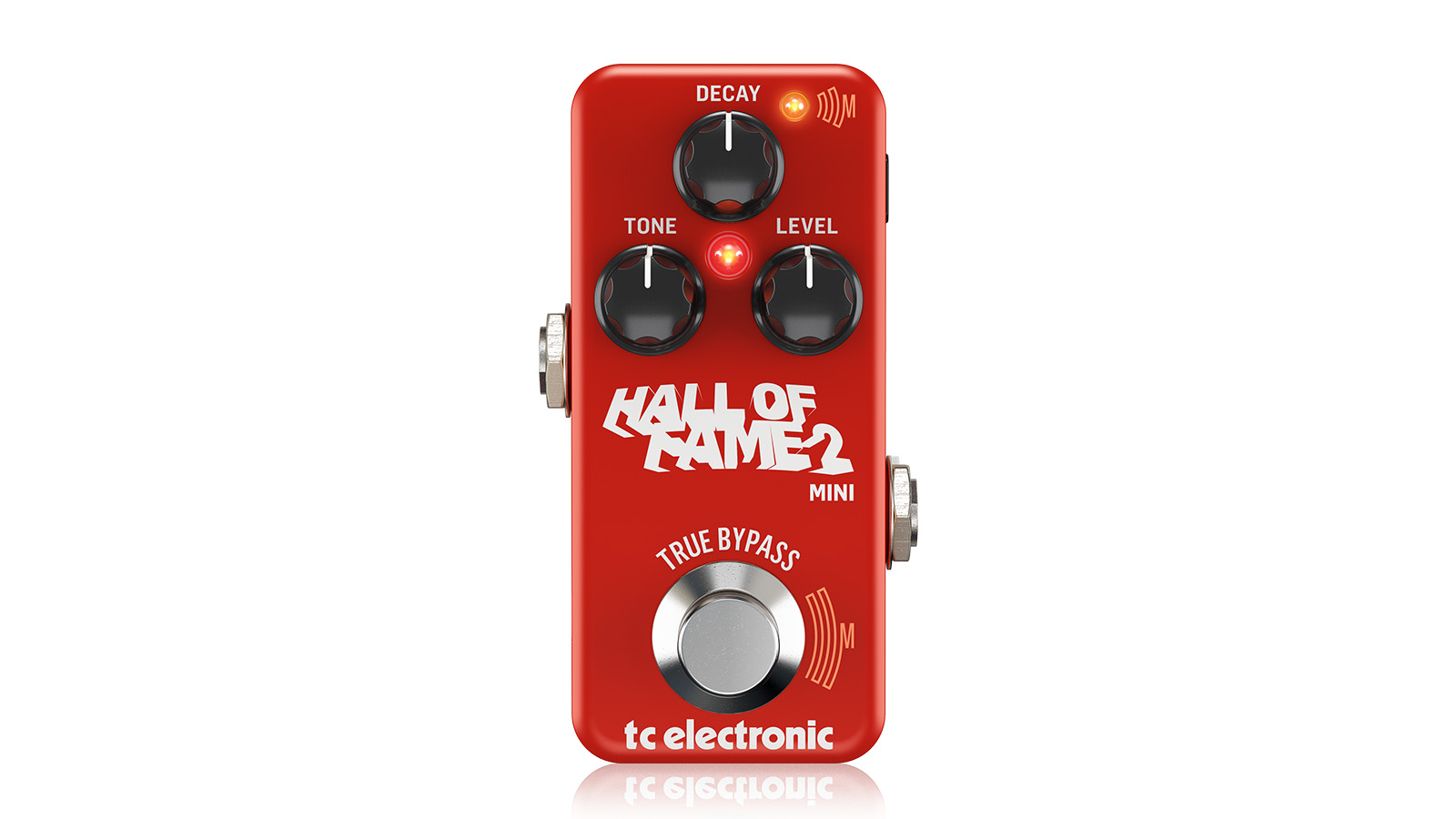
6. TC Electronic Hall of Fame 2 Mini Reverb
Our expert review:
Specifications
Reasons to buy
Reasons to avoid
The Hall of Fame Mini was an already impressive unit. This updated version brings dedicated controls for tone and decay as well as the MASH footswitch. This pressure-sensitive control, found on the larger Hall of Fame, can be used for swells and other expression effects.
Much has been written about the flexibility of the Tone Print software and it really is excellent. That said, while a wealth of options are accessible via Tone Print, if you have space for the full-fat version, it might be worth the upgrade to have it all at your fingertips.
Read our full TC Electronic Hall of Fame 2 Mini Reverb review
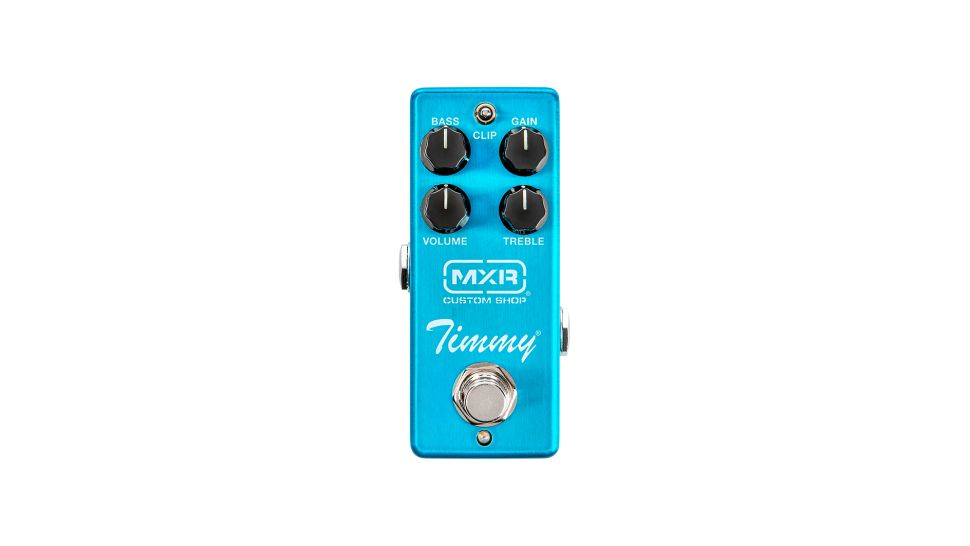
7. MXR Timmy overdrive
Our expert review:
Specifications
Reasons to buy
Reasons to avoid
When MXR teamed up with veteran boutique builder Paul Cochrane to make a version of his sought-after Timmy overdrive pedal for the masses, they decided they had to improve upon it in some way.
Given the circuit is spartan, not to mention a classic, adding more options was probably a non-starter. Whatever the reason, MXR opted to shrink it down into a mini enclosure. This means you can now have the original – and arguably best – transparent overdrive on the market in a pedalboard friendly size.
Read our full MXR Timmy review
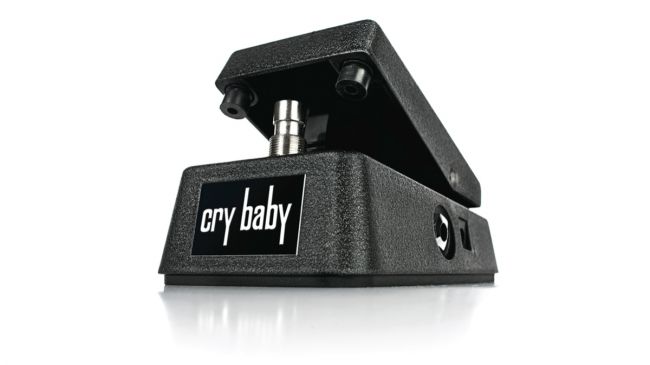
8. Dunlop Cry Baby Mini Wah CBM95
Our expert review:
Specifications
Reasons to buy
Reasons to avoid
One of the most ubiquitous pedals in all of guitardom is now available in mini form, without sacrificing any of its trademark tones – in fact, it offers the user three of them. Dunlop loaded the Cry Baby Mini Wah with three tonal flavors – low, vintage, and the more modern GCB95 – that cover the company’s entire range of wahs and are selectable from inside the pedal. The low position gives you a throaty, resonant tone for synth-y sweeps on lower strings; on the middle “vintage” setting, the pedal's sweep is full and wide; and the GCB95 setting offers a biting upper range.
There’s also true-bypass switching, a Hot Potz potentiometer and a red Fasel inductor. Power comes via a nine-volt battery or AC adapter. And despite its smaller footprint, the Mini Wah is housed in the same rugged enclosure and offers the full-sweep wah pedal feel of its older brother. A must-have.
Watch our Dunlop Cry Baby Mini Wah CBM95 review
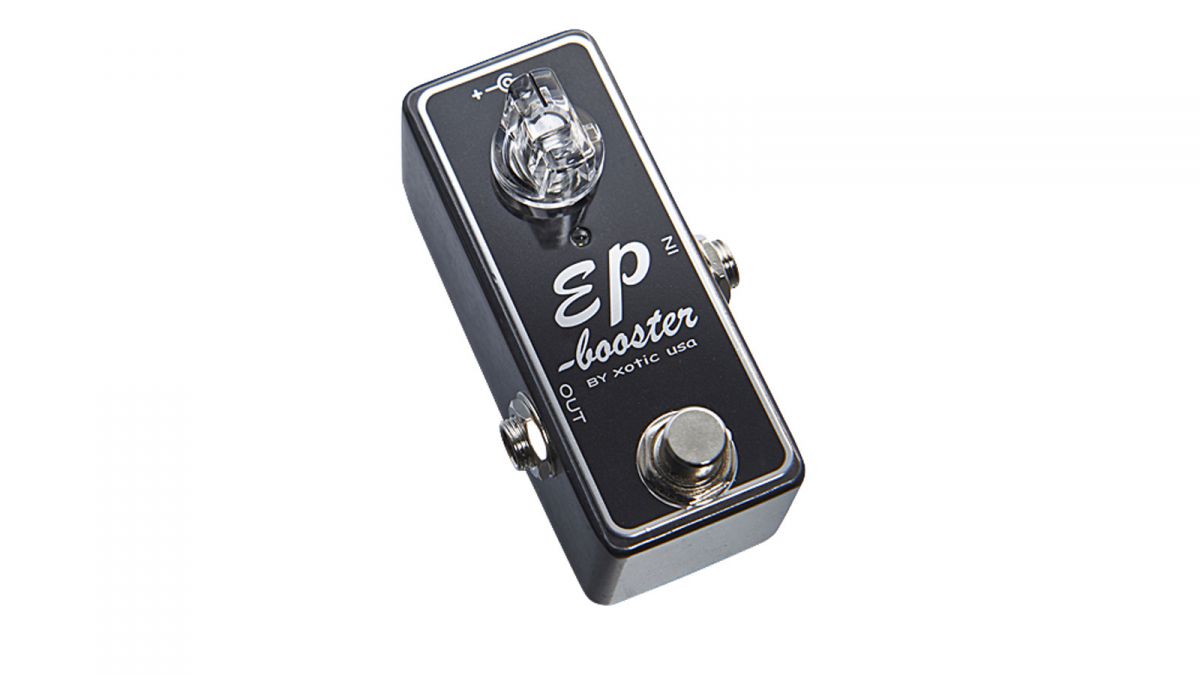
9. Xotic EP Booster Mini
Our expert review:
Specifications
Reasons to buy
Reasons to avoid
Based on the preamp stage of the Echoplex EP-3 – which guitarists like Jimmy Page, Eddie Van Halen and Eric Johnson used as a booster – the EP Booster will hit your amp with up to 20dB of boost to add a rich tonal character. There’s just a single knob to dial in the level, but internal DIP switches offer options to fine-tune your boost frequencies and EQ settings, from adding more defined low end to more top-end shimmer with another 3db of boost.
Whether you’re looking to add a bit of vintage dirt, richer bass or trebly bite to your tone, the EP Booster has got you covered.
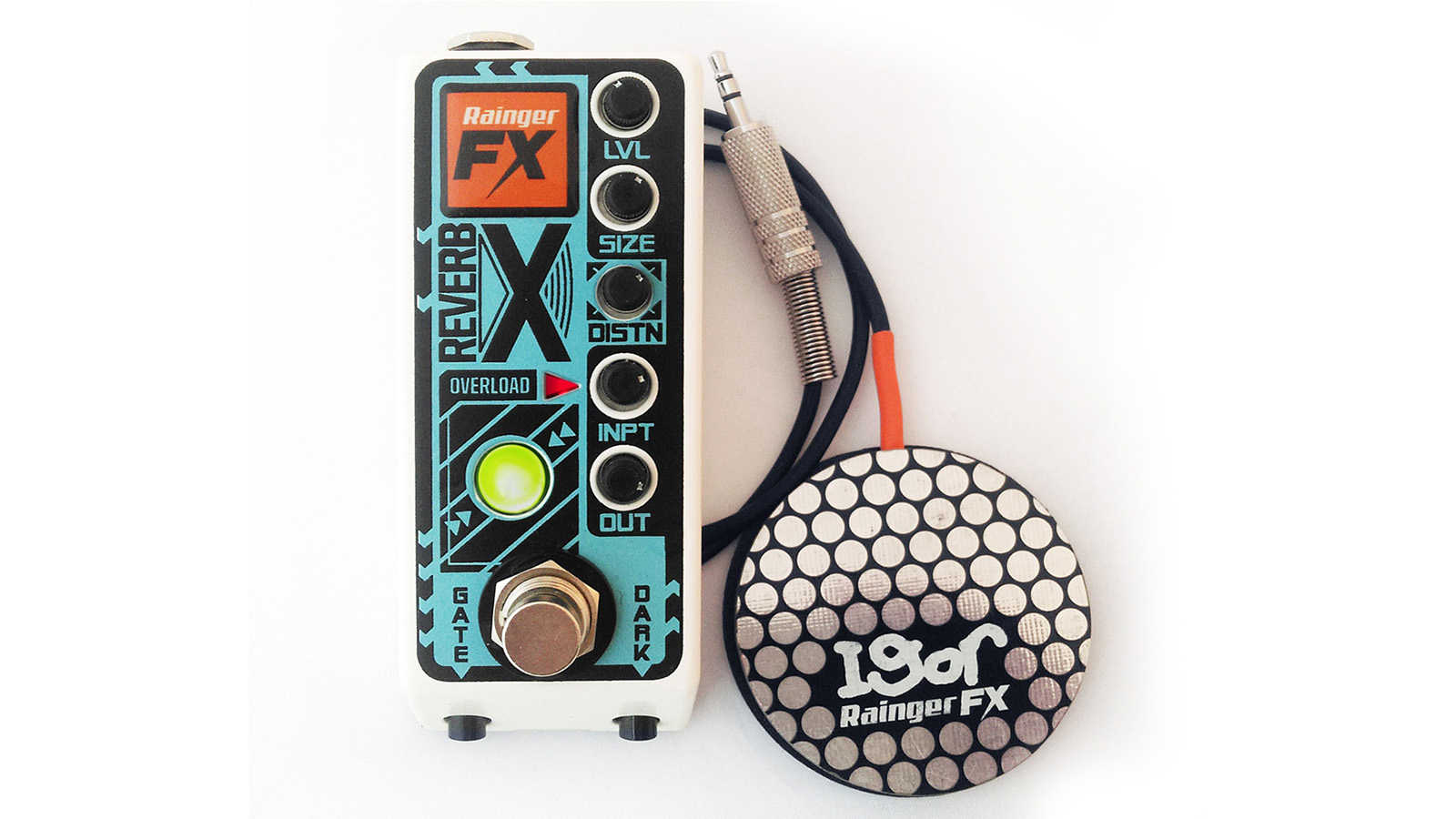
10. Rainger FX Reverb X
Our expert review:
Specifications
Reasons to buy
Reasons to avoid
Running reverb in front of your drive pedals – as opposed to the received wisdom of after – is a classic studio trick. It's a mainstay of many shoegaze guitarists, and players like Steven Wilson use it because they prefer the grittier timbre.
The Reverb X is a lo-fi delay based on this idea, boasting a dedicated distortion pot to allow you to control the crazy. It also has a built-in noise gate that can lead to dynamic glitchy and sputtery reverb sounds. Meanwhile, the Igor pressure-sensitive expression pedal allows for momentary activation of the reverb sound, for an even more dynamic effect.
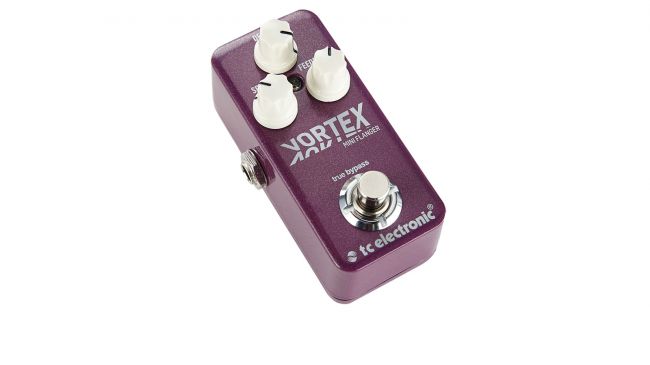
11. TC Electronic Vortex Mini Flanger
Our expert review:
Specifications
Reasons to buy
Reasons to avoid
If you’re looking to add some Eddie Van Halen-style woosh to your tone, the Vortex Mini Flanger is for you. The three-knob pedal offers nice classic tape flange, but, like all TC mini boxes, also supports the company’s TonePrint technology, allowing the user to wirelessly beam new presets via an iOS/Android app. You can also edit your own sounds with the PC-based TonePrint Editor and USB connection.
Additionally, there's true bypass, as well as Analog-Dry-Through, which maintains the full integrity of an analog dry signal path even when the flange effect is engaged. A nifty little box to add just the right amount of swirl, swoosh and shimmer to your sound.
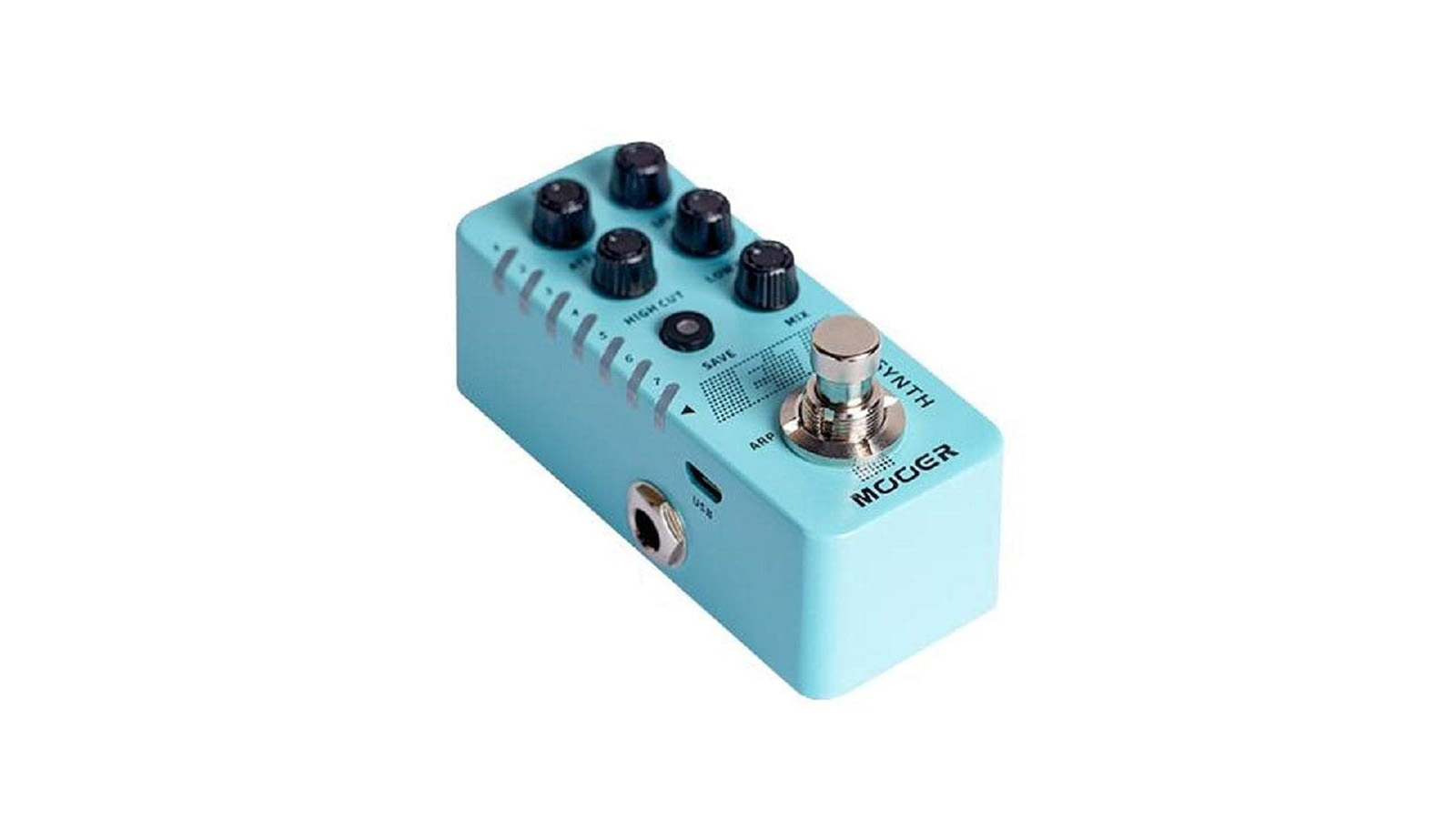
12. Mooer E7 synth
Our expert review:
Specifications
Reasons to buy
Reasons to avoid
The Mooer E7 is the synth offering in their 7 series of pedals, which also features an excellent ambient reverb and a delay. For its size, it's astonishing – a polyphonic synth with an arpeggiator that fits in the palm of your hand. It has attack, speed, mix and EQ settings which help you dial in a patch, though it sounds best with the mix dimed.
As you'd imagine, though it's great for pads, especially with the attack pulled back, it has somewhat limited flexibility. It works best when paired with an external delay or reverb, but at this price, it's very hard to find fault with. We still have our old Roland GR-33 synth, which requires a dedicated pickup to use!
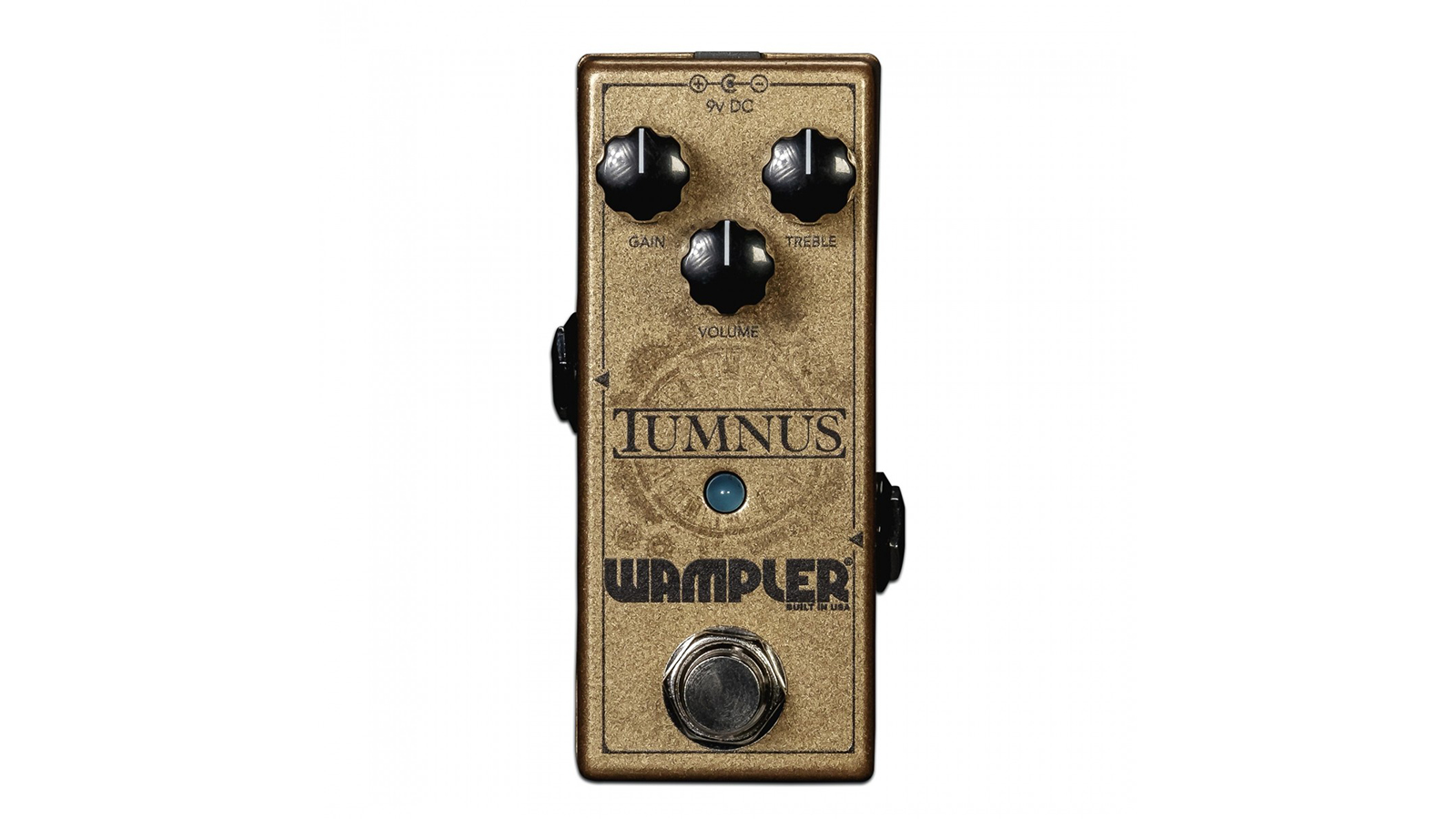
13. Wampler Tumnus
Our expert review:
Specifications
Reasons to buy
Reasons to avoid
Ok, so this might be yet another Klon clone, but to be honest, it’s probably one of the best copies out there, making the Wampler Tumnus Mini one of the best mini pedals by default. It’s perhaps not the most adventurous of choices, but there’s a reason why these kinds of pedals are on so many boards!
Wampler, and indeed many Tumnus users, claim this to be one of the closest in terms of sound to the original Klons. This pedal however is considerably more affordable and only takes up a tiny bit of space on your board.
There are different ways you can use this – as an overdrive pedal in its own right, to add some extra grit to your sound, almost acting like another channel through a clean amp, alongside other drive pedals to shape your tone and get the gain sounding just how you like it, or as a clean boost to help drive a tube amp into natural overdrive.
Read our full Wampler Tumnus review
Best mini pedals: Buying advice

What is a mini pedal?
Mini pedals are exactly what they say on the tin. They’re guitar pedals that have been made more compact so that you can either use more of them on a ‘board, or you can run a much smaller rig. You’ll often find that two versions of a pedal are available – a ‘full-sized’ one, and a compact one. In a lot of instances they’re exactly the same thing, just in different sized casings, and the smaller one can be cheaper.
So, is smaller always better? It depends on your preference – some players find compact pedals harder to use, especially if many of them are packed together tightly on a board. Some scaled down pedals might not have as many features or controls as their full-fat counterparts, so always think about what parameters you need control over and whether the mini pedal offers that.
An example would be TC Electronic's Mini range, where the pedals have fewer controls. On others however, like the Ibanez Mini range, the pedals are cheaper and smaller – but there's no other difference, so it's down to taste. It's worth adding that with TC's TonePrint software, you can change parameters 'in the box', and it's only hardware like stereo ins and outs that differs.
You’ll likely find that the best mini pedals for guitarists excel at one thing, but might not be a do-it-all pedal like some bigger ones. This makes sense logically, as there’s less room for circuitry. But if you want a pedal that gives you an overdriven/delayed/chorus sound etc and nothing else, then that’s not a worry. It’s only if you want a few different things from a single pedal that might make you feel limited.
For boutique builders, designing pedals that will fit inside smaller enclosures is hard. Designing and then assembling them is more costly than designing around a larger enclosure in most cases. This is why they're not usually seen outside of simple overdrives. There are some exceptions, including the wonderfully complicated Rainger FX Reverb X.
What mini pedal options do I have?
You can trust Guitar World
In terms of the choice available in a mini format, it's huge – everything from classic overdrives to multi-effects. As the mini size is what Mooer made their name on, they've been especially keen to drive innovation in the smaller format. First, they brought out a mini power amp and a range of amp-in-a-box style preamps. Most recently, they released the 7 series – complicated digital effects in a mini enclosure that can rival pedals many times their size.
How do you power a mini pedal?
Another thing to consider when shopping for the best mini pedals is the power source. Due to their size, most mini pedals can’t be battery powered – there simply isn’t room inside! Instead, you’ll need a power adaptor. If you’re running a few pedals at the same time then it’s worth getting one of the best pedal power supplies too, or running a daisy chain, so long as your plug adaptor supplies enough current.
Connectivity
With mini pedals, some features might be stripped away – one of these is often stereo connectivity. There are some great pedals out there that have multiple inputs and outputs that allow you to use a stereo rig. The size limitations associated with mini pedals does mean that in most cases, they will have mono operation.
Find out more about how we make our recommendations and how we test each of the products in our buyer's guides.
Related buyer's guides
- Killer cheap guitar pedals you need to try
- Get all wobbly with the best tremolo pedals
- Best guitar cables: top cables for acoustic, bass and electric guitar
- Best patch cables: tidy up your ‘board with the best patch leads
Get The Pick Newsletter
All the latest guitar news, interviews, lessons, reviews, deals and more, direct to your inbox!
Alex Lynham is a gear obsessive who's been collecting and building modern and vintage equipment since he got his first Saturday job. Besides reviewing countless pedals for Total Guitar, he's written guides on how to build your first pedal, how to build a tube amp from a kit, and briefly went viral when he released a glitch delay pedal, the Atom Smasher.
“The original Jordan Boss Tone was probably used by four out of five garage bands in the late ’60s”: Unpacking the gnarly magic of the Jordan Boss Tone – an actual guitar plug-in that delivers Dan Auerbach-approved fuzz
“This is a powerhouse of a stompbox that manages to keep things simple while offering endless inspiration”: Strymon EC-1 Single Head dTape Echo pedal review











